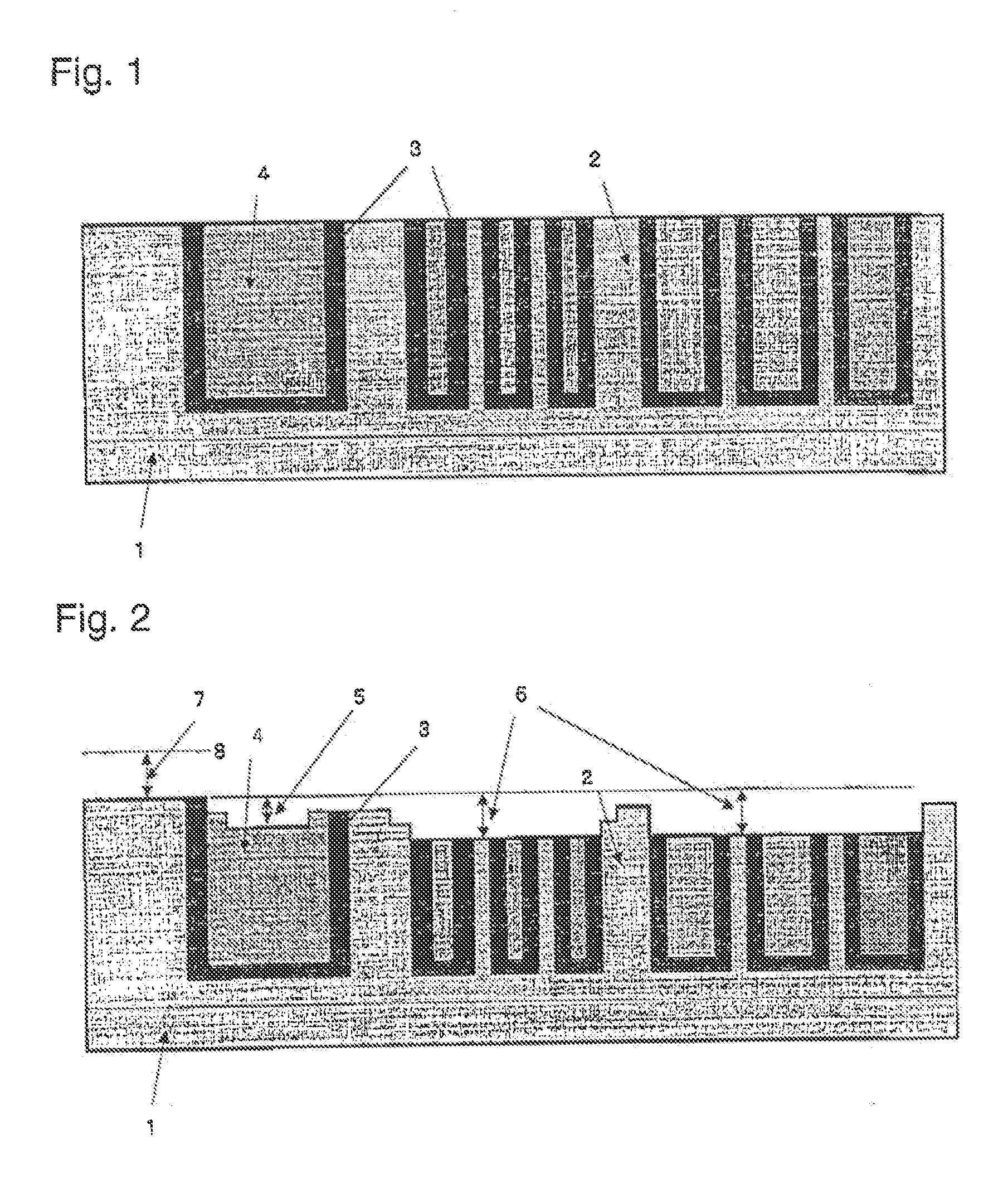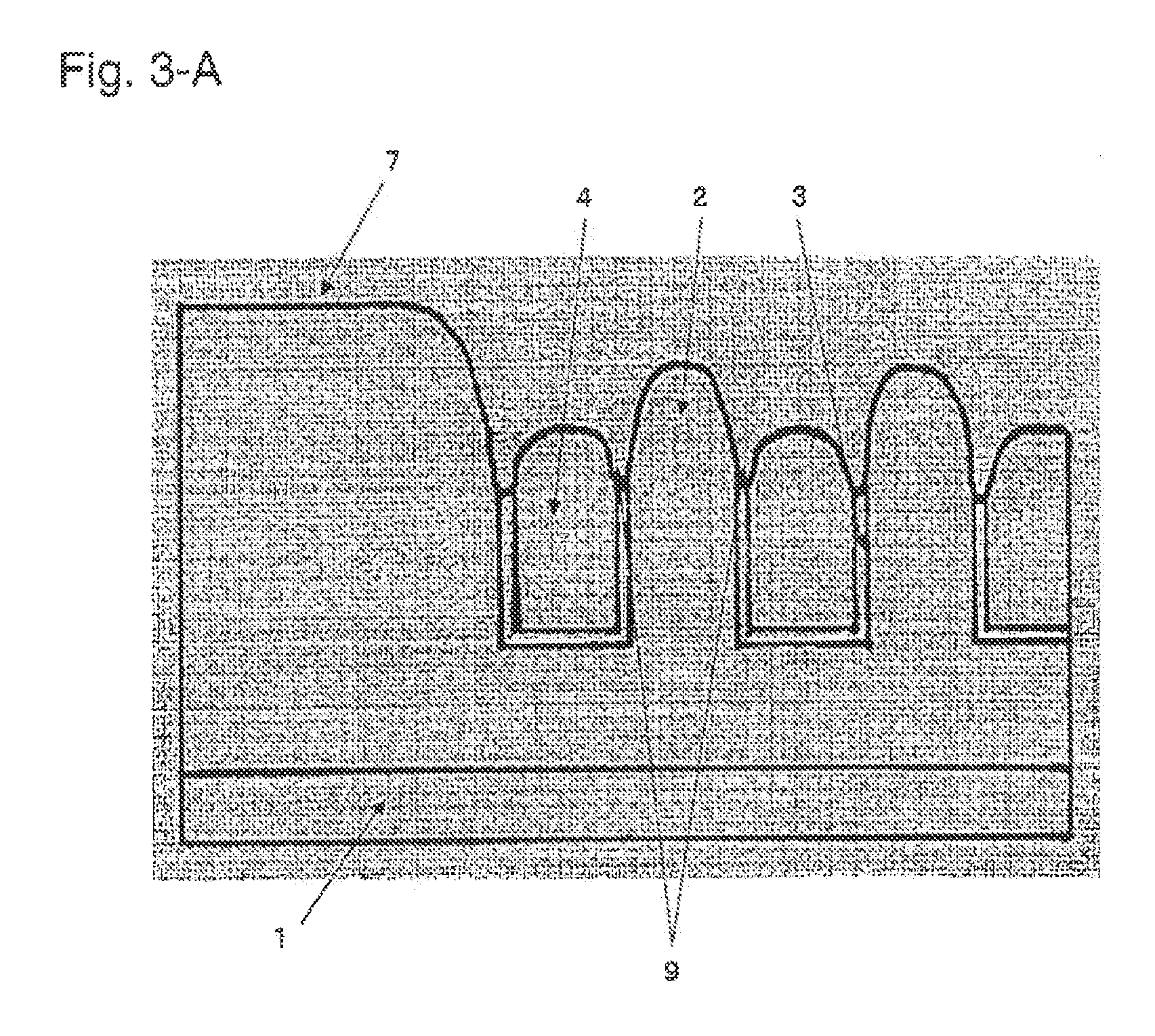Polishing compound, method for polishing surface to be polished, and process for producing semiconductor integrated circuit device
a technology of integrated circuit devices and polishing compounds, applied in other chemical processes, lapping machines, manufacturing tools, etc., can solve the problems of difficult to form copper into the shape of wirings, unevenness tends to increase, and the difference in level exceeds the depth of focus in lithography, so as to suppress the polishing of silicon dioxide and achieve high removal rate. , the effect of high removal ra
- Summary
- Abstract
- Description
- Claims
- Application Information
AI Technical Summary
Benefits of technology
Problems solved by technology
Method used
Image
Examples
examples
[0093]Now, the present invention will be described in further detail with reference to Examples (Examples 1 to 16) and Comparative Examples (Examples 17 to 19).
[0094](1) Preparation of Polishing Compounds
[0095](i) Each of polishing compounds of Examples 1 and 2 was prepared as follows. To water, the inorganic acid (F) and the pH buffer (G) were added, and the basic compound (E) in a half of the amount shown in Table 1 was further added, followed by stirring for 10 minutes to obtain liquid a. Then, the removal rate-adjusting agent (B) was dissolved in the organic solvent (C) to obtain liquid b having a solid content concentration of 40 mass %.
[0096]Then, the liquid b and the aqueous dispersion of abrasive particles (A) were gradually added to the liquid a, and then, the rest of the basic compound (E) was gradually added to adjust the pH to the target level. Then, H2O2 was added, followed by stirring for 30 minutes to obtain a polishing compound. The components (A) to (G) used in resp...
PUM
| Property | Measurement | Unit |
|---|---|---|
| boiling point | aaaaa | aaaaa |
| viscosity | aaaaa | aaaaa |
| boiling point | aaaaa | aaaaa |
Abstract
Description
Claims
Application Information
 Login to View More
Login to View More - R&D
- Intellectual Property
- Life Sciences
- Materials
- Tech Scout
- Unparalleled Data Quality
- Higher Quality Content
- 60% Fewer Hallucinations
Browse by: Latest US Patents, China's latest patents, Technical Efficacy Thesaurus, Application Domain, Technology Topic, Popular Technical Reports.
© 2025 PatSnap. All rights reserved.Legal|Privacy policy|Modern Slavery Act Transparency Statement|Sitemap|About US| Contact US: help@patsnap.com



